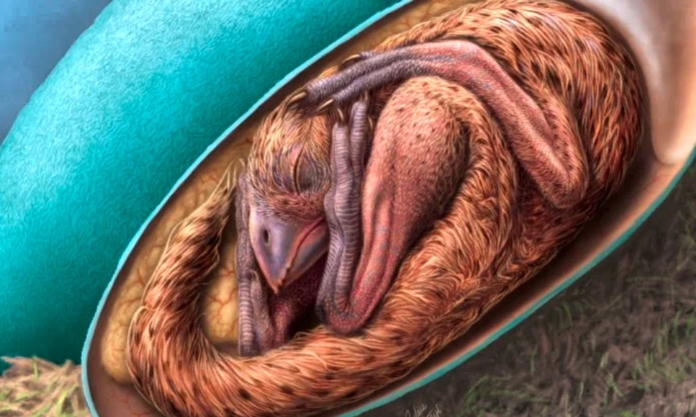His name is George. He’s Peppa Pig’s baby brother. And he loves roaring, “Dinosaur!”. Hey, don’t we all? And now George has something else to roar for; a perfectly-preserved dinosaur embryo fossil discovered in China providing us with the “bird link”.
This solstice, 21 December, saw the report published outlining the fossil find, that of a complete baby dinosaur in its egg. But the kicker is the bones of the fossilised embryo show it to be exhibiting exactly the kind of behaviour displayed by birds directly before they hatch.
The extremely rare find was made at the Yingliang Stone Natural History Museum in Xiamen City of Fujian Province. Elsewhere, there been perhaps only half a dozen similar finds.
But none display the near-conclusive signs of the evolutionary link between dinosaurs and birds that Baby Yingliang does, it being named after the museum where it was found.
That sign is a posture known as “tucking”, in which Yingliang had its head under one arm. It’s what birds do all the time. If they don’t, they will likely be unable to hatch.
Ma Fion Waisum, a paleontologist at the University of Birmingham in the United Kingdom, is one of the lead authors of the study. “Some embryos are quite well preserved, but they don’t show this posture. … And some are very fragmentary, so it is difficult to see their posture clearly”, said Ma, reports NBC News.
The so called “egg thief lizards” (oviraptorosaurs) were a group of dinosaurs with feathers, although they were not birds. They lived during the Cretaceous Period (145-66 M.Y.A) across what is now Asia and North America.
This dinosaur species also had hard shells. It is thought that the tucking posture was evolved in order to better break through the harder shell.
Yingliang’s near-complete skeleton is 23.5 centimetres from head to tail, reports ScienceAlert. Had the baby been born and not wiped out by the famous asteroid impact, it would have been 2 metres long when fully grown into an adult.
But some remain skeptical of the study’s findings. Bi Shundong of the Indiana University of Pennsylvania, doesn’t want to put too much faith in a single specimen. “I think more evidence is needed”, he said.









